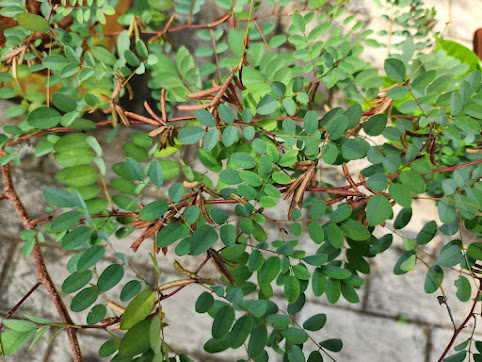11.
Indigofera tinctoria നീലയമരി
| Indigofera tinctoria | |
|---|---|
|
| |
| Scientific classification | |
| Kingdom: | Plantae |
| Clade: | Tracheophytes |
| Clade: | Angiosperms |
| Clade: | Eudicots |
| Clade: | Rosids |
| Order: | Fabales |
| Family: | Fabaceae |
| Subfamily: | Faboideae |
| Genus: | Indigofera |
| Species: | I. tinctoria
|
| Binomial name | |
| Indigofera tinctoria | |
True indigo is a shrub 1–2 metres (3 ft 3 in – 6 ft 7 in) high. It may be an annual, biennial, or perennial, depending on the climate in which it is grown. It has light green pinnate leaves and sheafs of pink or violet flowers.
The rotenoids deguelin, dehydrodeguelin, rotenol, rotenone, tephrosin and sumatrol can be found in . tinctoria.
History
Marco Polo (13th century) was the first European to report on the preparation of indigo in India. Indigo was quite often used in European easel painting, beginning in the Middle Ages.
Marco Polo (13th century) was the first European to report on the preparation of indigo in India. Indigo was quite often used in European easel painting, beginning in the Middle Ages.
References Link :
https://en.wikipedia.org/wiki/Indigofera_tinctoria
-------------------------------------------------------------------------------
Medicinal Plants Garden
MTM College of Arts Science and Commerce.
Veliyancode.
Website: https://www.mtmcasc.ac.in/

..jpg)
.jpg)

..jpg)
No comments:
Post a Comment